
How to Use esp8266 nodemcu : Examples, Pinouts, and Specs
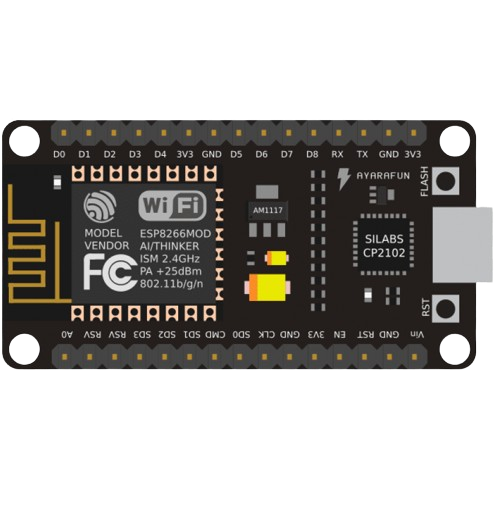
 Design with esp8266 nodemcu in Cirkit Designer
Design with esp8266 nodemcu in Cirkit DesignerIntroduction
The ESP8266 NodeMCU is a low-cost, open-source IoT platform built around the ESP8266 Wi-Fi module. It combines a powerful microcontroller with integrated Wi-Fi capabilities, making it an excellent choice for Internet of Things (IoT) applications. The NodeMCU development board simplifies prototyping by providing a USB interface, GPIO pins, and compatibility with the Lua scripting language or the Arduino IDE.
Explore Projects Built with esp8266 nodemcu
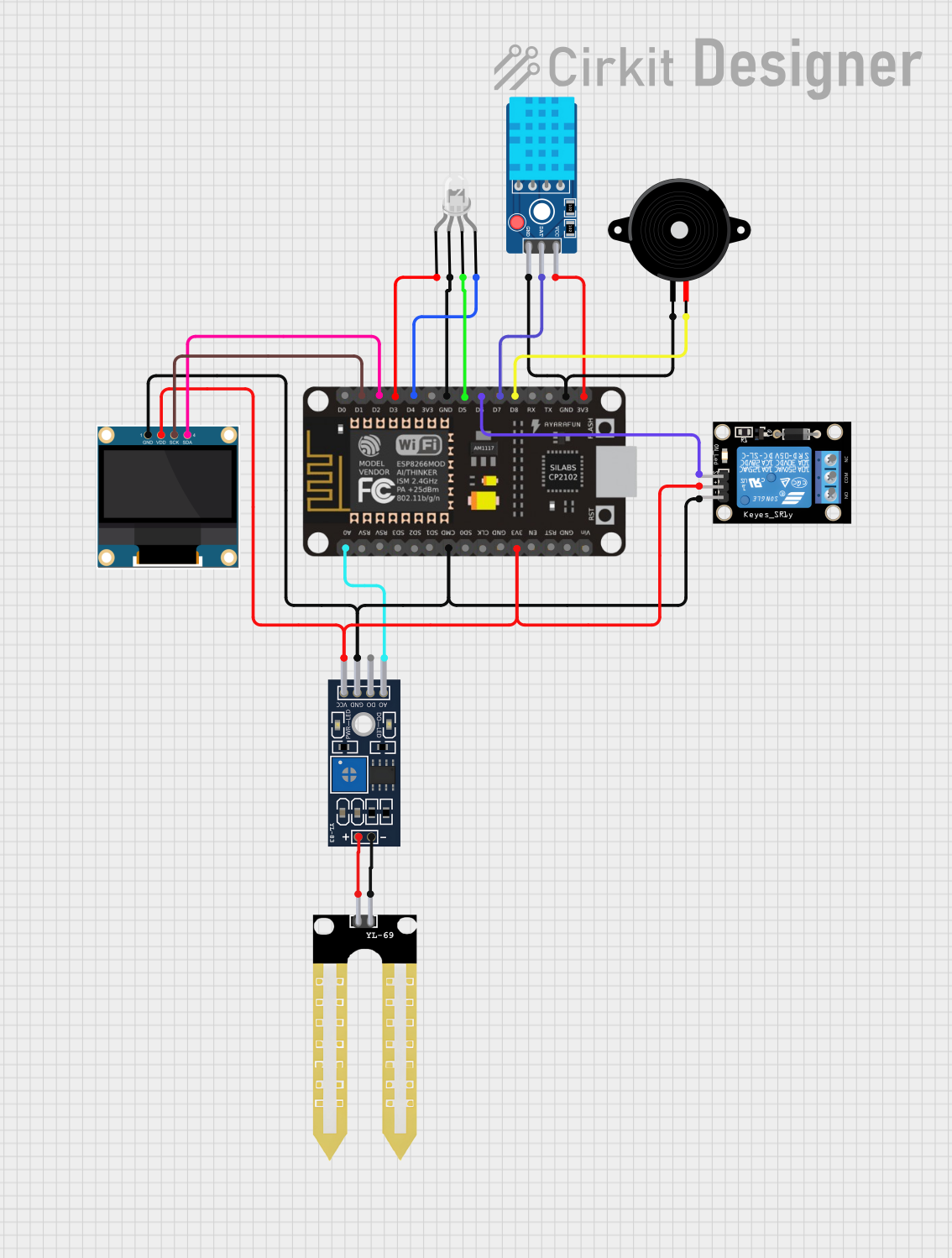
 Open Project in Cirkit Designer
Open Project in Cirkit Designer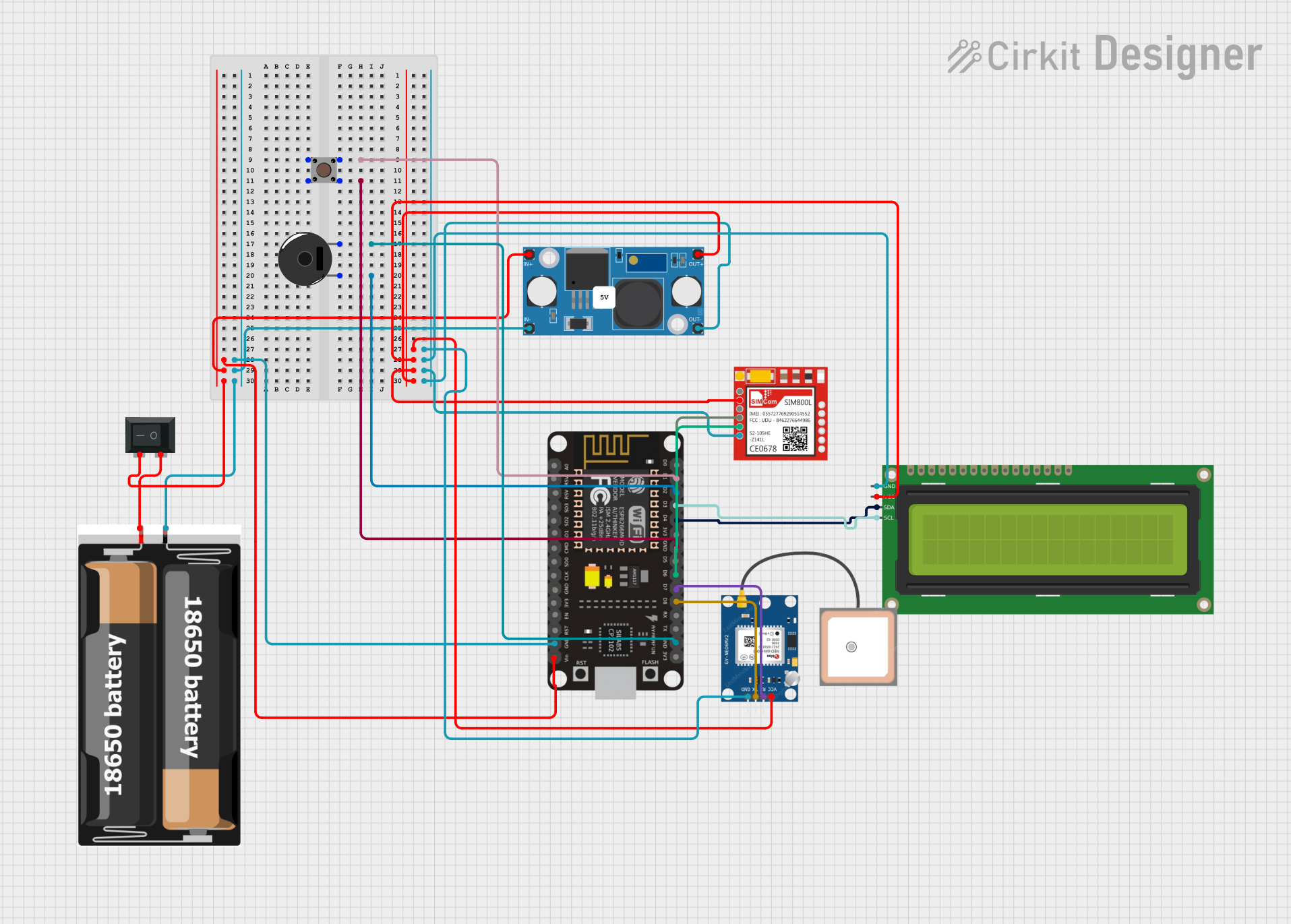
 Open Project in Cirkit Designer
Open Project in Cirkit Designer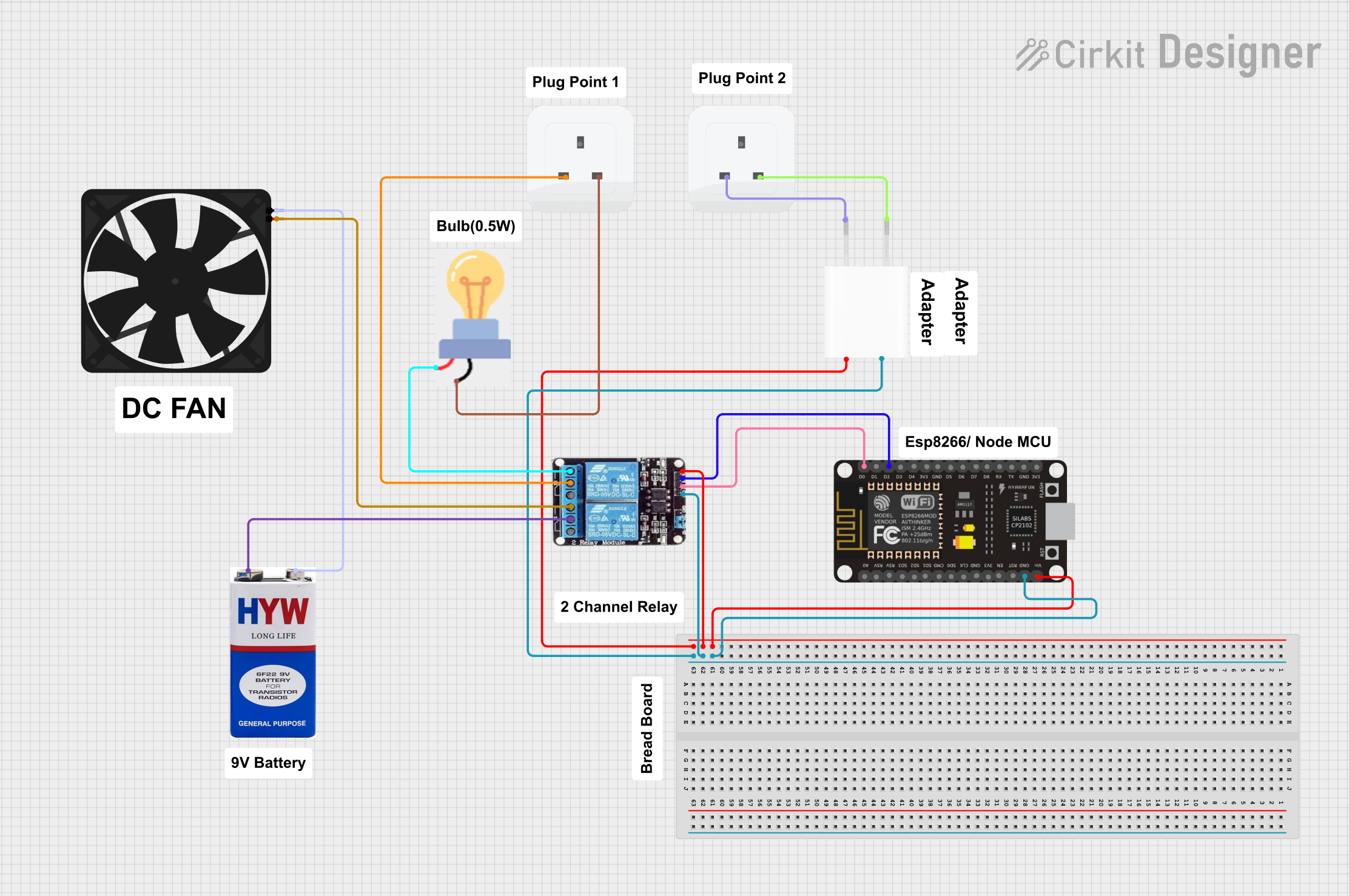
 Open Project in Cirkit Designer
Open Project in Cirkit Designer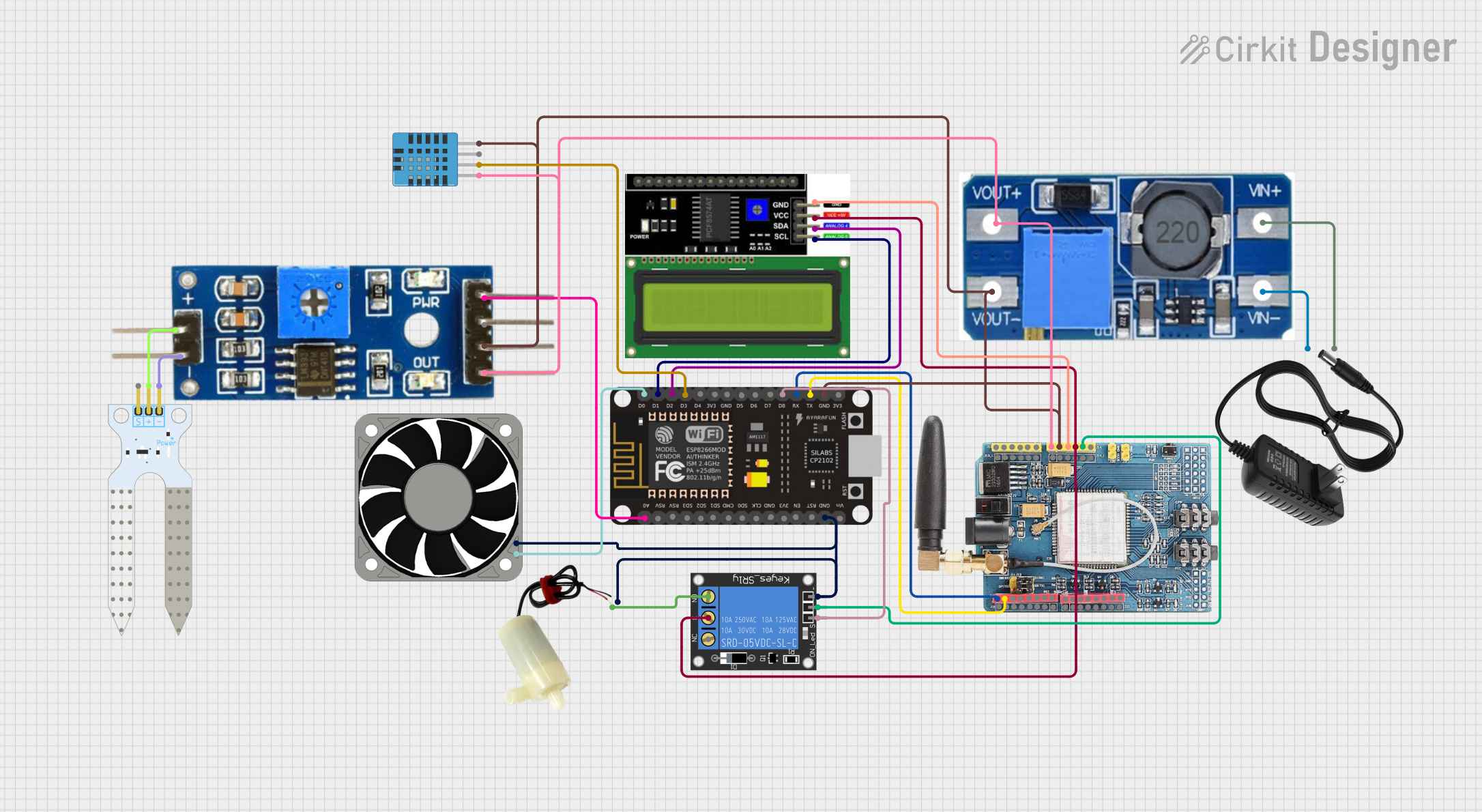
 Open Project in Cirkit Designer
Open Project in Cirkit DesignerExplore Projects Built with esp8266 nodemcu

 Open Project in Cirkit Designer
Open Project in Cirkit Designer
 Open Project in Cirkit Designer
Open Project in Cirkit Designer
 Open Project in Cirkit Designer
Open Project in Cirkit Designer
 Open Project in Cirkit Designer
Open Project in Cirkit DesignerCommon Applications and Use Cases
- Home automation systems
- Smart appliances
- IoT data logging and monitoring
- Wireless sensor networks
- Remote control of devices
- Prototyping and educational projects
Technical Specifications
Key Technical Details
- Microcontroller: ESP8266 (Tensilica L106 32-bit processor)
- Clock Speed: 80 MHz (can be overclocked to 160 MHz)
- Flash Memory: 4 MB (varies by model)
- RAM: 64 KB instruction RAM, 96 KB data RAM
- Wi-Fi: 802.11 b/g/n, supports WPA/WPA2
- Operating Voltage: 3.3V
- Input Voltage: 4.5V–10V (via VIN pin) or 5V (via USB)
- GPIO Pins: 11 digital I/O pins (some with PWM support)
- Analog Input: 1 ADC pin (10-bit resolution, 0–3.3V range)
- Communication Protocols: UART, SPI, I2C
- Power Consumption: ~70 mA (active), ~10 µA (deep sleep)
Pin Configuration and Descriptions
The ESP8266 NodeMCU has a total of 30 pins. Below is a table of the most commonly used pins:
| Pin Name | Function | Description |
|---|---|---|
| VIN | Power Input | Accepts 4.5V–10V input to power the board. |
| 3V3 | 3.3V Output | Provides 3.3V output for external components. |
| GND | Ground | Connect to the ground of the circuit. |
| D0–D8 | Digital I/O | General-purpose digital pins, some support PWM, I2C, and SPI. |
| A0 | Analog Input | 10-bit ADC pin for reading analog signals (0–3.3V). |
| RX | UART Receive | Serial data input (used for programming and communication). |
| TX | UART Transmit | Serial data output (used for programming and communication). |
| EN | Enable | Active-high pin to enable the module. |
| RST | Reset | Resets the microcontroller when pulled low. |
| SD3, SD2 | SPI Flash Interface | Used for SPI communication (not typically used in most projects). |
Usage Instructions
How to Use the ESP8266 NodeMCU in a Circuit
- Powering the Board:
- Use a micro-USB cable to power the board via the USB port.
- Alternatively, supply 4.5V–10V to the VIN pin or 3.3V to the 3V3 pin.
- Connecting Sensors and Actuators:
- Use the GPIO pins (D0–D8) for digital input/output.
- Use the A0 pin for analog input (ensure the input voltage does not exceed 3.3V).
- Programming the Board:
- Install the Arduino IDE and add the ESP8266 board package via the Board Manager.
- Select "NodeMCU 1.0 (ESP-12E Module)" as the board.
- Connect the board to your computer via USB and upload your code.
Example Code: Blinking an LED
Below is an example of how to blink an LED connected to GPIO pin D1 (labeled as GPIO5):
// Define the GPIO pin where the LED is connected
#define LED_PIN D1
void setup() {
pinMode(LED_PIN, OUTPUT); // Set the LED pin as an output
}
void loop() {
digitalWrite(LED_PIN, HIGH); // Turn the LED on
delay(1000); // Wait for 1 second
digitalWrite(LED_PIN, LOW); // Turn the LED off
delay(1000); // Wait for 1 second
}
Important Considerations and Best Practices
- Voltage Levels: Ensure all connected components operate at 3.3V logic levels. Use level shifters if necessary.
- Power Supply: Use a stable power source to avoid unexpected resets or instability.
- Deep Sleep Mode: Use deep sleep mode to reduce power consumption in battery-powered projects.
- Pull-Up/Down Resistors: Some GPIO pins may require pull-up or pull-down resistors for proper operation.
Troubleshooting and FAQs
Common Issues and Solutions
Problem: The board is not detected by the computer.
Solution:- Ensure the USB cable is functional and supports data transfer.
- Install the correct USB-to-serial driver (e.g., CH340 or CP2102).
Problem: The code fails to upload to the board.
Solution:- Check that the correct board and port are selected in the Arduino IDE.
- Press and hold the "Flash" button on the board while uploading.
Problem: The board resets or behaves erratically.
Solution:- Verify that the power supply is stable and sufficient.
- Avoid connecting peripherals that draw excessive current.
Problem: Wi-Fi connection fails.
Solution:- Double-check the SSID and password in your code.
- Ensure the router is within range and supports 2.4 GHz Wi-Fi.
FAQs
Q: Can I use 5V sensors with the ESP8266 NodeMCU?
A: No, the ESP8266 operates at 3.3V logic levels. Use a level shifter for 5V sensors.Q: How do I reset the board to factory settings?
A: Flash a blank firmware or use the "Erase Flash" option in the ESP8266 Flasher tool.Q: What is the maximum Wi-Fi range of the ESP8266?
A: The range is approximately 50 meters indoors and 100 meters outdoors, depending on obstacles.Q: Can I use the ESP8266 NodeMCU with MicroPython?
A: Yes, the ESP8266 supports MicroPython. Flash the MicroPython firmware to get started.
This documentation provides a comprehensive guide to using the ESP8266 NodeMCU for your IoT projects. Happy tinkering!